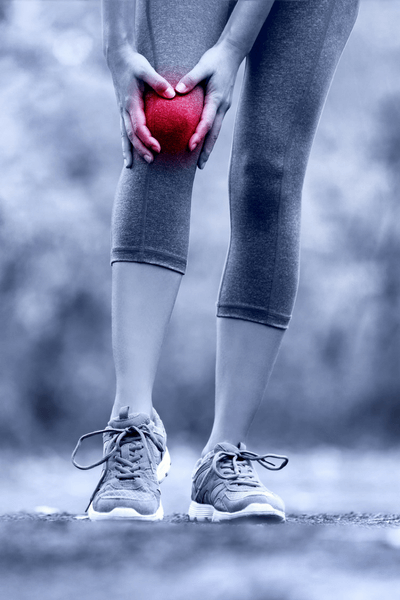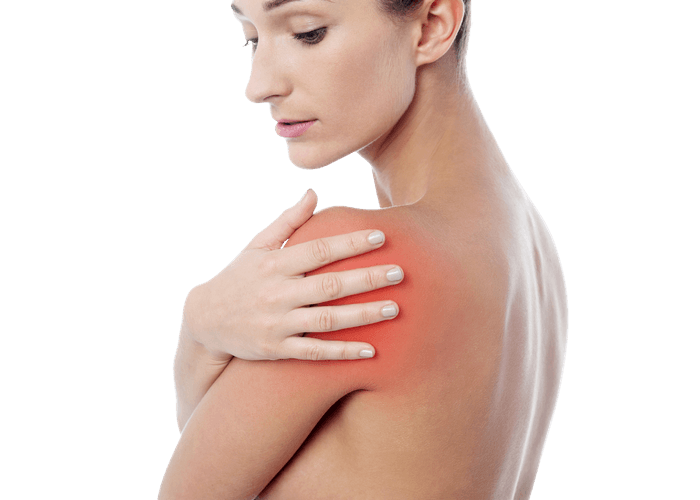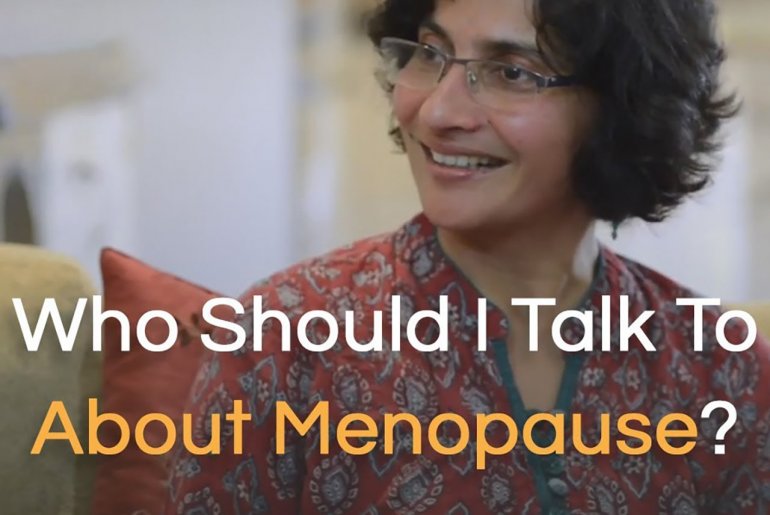Is menopause responsible for joint pains, stiff joints, and muscle aches in women?
It certainly can be. Menopause joint pain and muscle stiffness arise in women who are between the ages of 45-55.
Menopause is the not-so-silent life process – it contributes to an endless number of symptoms. Santoro, Epperson, and Mathews (2015) published a study on menopausal symptoms and their management. Menopause joint pain is a common symptom that you may not have realized is a symptom of hormonal changes. Wondering if other symptoms you are experiencing are related to changes in your hormones? Read signs of menopause, and get educated!

They stated the onset of menopause comes with tons of symptoms: insomnia, skipped heartbeats, vile taste, dry eyes, hot flashes, decreased libido, fatigue, and joint pains being some of the most noticeable symptoms. (1)
Why do woman get menopause joint pain with hormonal changes?
Women experiencing menopause joint pain affecting different types of joints. What is this connection between joint pain and menopause? Well, menopause is accompanied by many hormonal changes that can affect the health of your bones.
Medically, the exact mechanisms by which hormonal changes affect the joints and cause joint pain is not clear. However, many types of research associate joint pain with the reduction of estrogen and other hormonal changes in the body. (2)
The hormonal changes are attributed to different pathological changes that affect the endocrine, autocrine, and paracrine systems responsible for the production of many hormones. In the long run, the normal balance of tissues within the joints are affected causing joint pain. Menopausal arthralgia is a thing. (3)
What hormones cause menopause joint pain?
The reduction of estrogen levels in the body has been identified as the primary cause of joint pain in women experiencing peri-menopause and menopause. Estrogen plays an important role as it keeps inflammation in check within the joints. Besides that, it regulates the fluid balance within the joints. (3)
Roman-Blas, Castañeda, Largo, and Herrero-Beaumont, observed that estrogen deficiency is associated with osteoarthritis (OA) also known as menopausal joint pain, affect most of the joint tissues. Osteoarthritis is induced by the reduction in the level of estrogen and as a result causes cartilage degeneration, synovial inflammation, and osteophyte formation. (2)
Estrogen also plays an important role in balancing the fluid levels, particularly with the joints. The reduction in estrogen level causes dehydration and offsets the level of fluids within the joints. As a result, reduced body fluids causes uric acid to build up and eventually causes inflammation and sometimes severe pains within the joints.
Joints affected by menopause joint pains
During the menopause transition, most women experience pain in various joints. According to a study published by Weed titled Menopausal Years: The Wise Woman Way—Alternative Approaches for Women, the joints that are commonly affected during menopause include the knees, shoulders, and elbow. (4)
Other joints include lower back, hip, fingers, and wrist joints that may worsen other health-related issues such as kidney weakness, osteoporosis, and immune system dysfunction. These joint pains are most common in the morning if you are a woman between 45 and 55, but as you progress throughout the day the pain within these joints seems to reduce.
Women who are involved in high impact exercises such as early morning jogging can worsen joint pain, also known as menopausal arthritis, especially in joints such as the knees and hips. However, when you rest enough these exacerbated pains can ease with time.
How to treat joint pain caused by menopause
The good news about menopausal joint pain is that it can be managed or even eradicated. There are a number of ways you can treat joint pains. The most common type of treatment options includes diet and lifestyle changes, alternative medicine, prescriptions from a dermatologist, therapy, and medications.
Diet
Having a balanced diet has been attributed to easing joint pain during menopause as well as solving other symptoms of menopause. In addition, eating healthy will help keep weight in check as it is a major factor that worsens joint pain.
To begin with, eat a diet that is rich in calcium as it will help to strengthen your bones and keep them healthy. Office of Dietary Supplements (2016) pointed out that calcium should be accompanied by foods rich in magnesium such as whole grains, nuts, and dried fruits to enhance the absorption of calcium into the bones. If a diet rich in calcium and magnesium cannot be achieved, then use supplements that provide those two important bone-strengthening minerals. (5)
As stated by Goldberg and Katz (2007), you should also eat diets that are rich in omega-3 fatty acids and vitamin C such as fish and berries as they are antioxidants that reduce inflammation and pain. (6)
Lifestyle changes
Changing your lifestyle may also help to reduce joint pain. For instance, you should avoid high impact exercise such as jogging and adopt low-impact exercises such as swimming and Tai chi. Using techniques such as hot or cold compresses in intervals of 20 minutes can help ease the joint pain.
Other lifestyle changes that can be of help include avoiding bad health habits such as smoking. Cigarette smoke has a negative impact on your health, especially the bones. The active ingredient in cigarette increases inflammation. Lifestyle changes that promote overall health and do not exert pressure on your joints are really effective in easing menopausal joint pain.
Alternative medicine
According to Chainani-Wu, (2003) alternative medicines offer a solution in treating osteoarthritis. Herbal supplements have shown great potential in treating joint pain and they are less expensive and easy to store compared to other forms of alternative medicine. Herbal supplements will not only ease joint pain, but also treat hormonal imbalance. For instance, phytoestrogenic supplements and hormone-regulating supplements are two common herbal supplements used to suppress pain in joints, as well as stabilize and balance hormones. (7)
Medication and therapy
Different types of therapies have been used to suppress joint pain. Therapies such as acupuncture have been used to treat joint pain. Although these therapies usually require a long time commitment, they can be very effective.
Over the counter medicines are largely used to treat and reduce the joint pain in menopause. Medications commonly used include acetaminophen, naproxen, and ibuprofen which can help to relieve the pain and swelling.
Conclusion
Joint pain during menopause can be a nagging pain that reduces your activity and impacts your happiness. The intensity of pain varies depending on the type of joint pain and extent of the damage to joint tissues. With proper lifestyle management, therapy, and medication you will be able to significantly reduce, or even eliminate joint pain.
References
- Santoro, N., Epperson, C. N., & Mathews, S. B. (2015). Menopausal symptoms and their management. Endocrinology and Metabolism Clinics, 44(3), 497-515.
- Roman-Blas, J. A., Castañeda, S., Largo, R., & Herrero-Beaumont, G. (2009). Osteoarthritis associated with estrogen deficiency. Arthritis research & therapy, 11(5), 241.
- Magliano, M. (2010). Menopausal arthralgia: Fact or fiction. Maturitas, 67(1), 29-33.
- Weed Susun, S. (1992). Menopausal Years. The Wise Woman Way. Alternative Approaches for Women 30-90.
- Office of Dietary Supplements. (2016). Vitamin C – Fact Sheet for Health Professionals. Retrieved April 22, 2016, from https://ods.od.nih.gov/factsheets/VitaminC-HealthProfessional
- Goldberg, R.J. & Katz, J. (2007). A meta-analysis of the analgesic effects of omega-3 polyunsaturated fatty acid supplementation for inflammatory joint pain. Pain, 129(1-2), 210-223. Retrieved from http://www.ncbi.nlm.nih.gov/pubmed/17335973
- Chainani-Wu, N. (2003). Safety and anti-inflammatory activity of curcumin: a component of tumeric (Curcuma longa). Journal of Alternative and Complementary Medicine, 9(1), 161-168. Retrieved from http://www.ncbi.nlm.nih.gov/pubmed/12676044
8. National Institutes of Health. (2014). Joint pain. Retrieved April 22, 2016, from https://www.nlm.nih.gov/medlineplus/ency/article/003261.htm





This form is protected by reCAPTCHA and the Google Privacy Policy and Terms of Service apply.